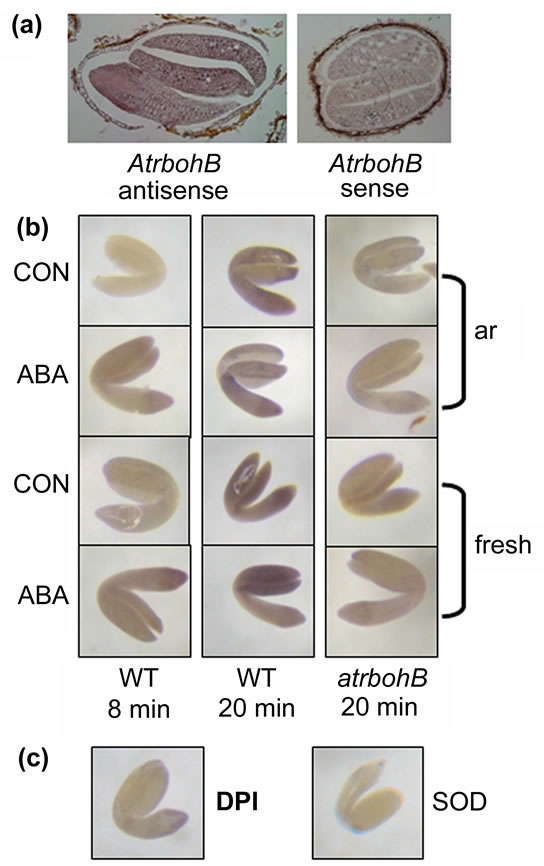New Phytologist 184: 885-897 (2009)
The NADPH-Oxidase AtrbohB plays a role in Arabidopsis seed after-ripening [W]
Centro de Biotecnología y Genómica de Plantas (UPM-INIA), Universidad Politécnica de Madrid, 28223 Pozuelo de Alarcón (Madrid), Spain (M.A.T.)
Received April 30, 2009; accepted July 13, 2009; published online September 15, 2009
DOI 10.1111/j.1469-8137.2009.03005.x
 |
Figure 5. AtrbohB-transcripts and superoxide production localize to the embryo of germinating Arabidopsis seeds. (a) RNA in-situ hybridization shows the localization of the AtrbohB-transcript to the embryo, but not the endosperm of 24 h imbibed Arabidopsis seeds. No signal was visible with the corresponding sense probe. This probe was designed to bind to both the AtrbohB-α and AtrbohB-ß transcript splice variant. (b) Superoxide production in embryos of 24 h imbibed fresh and after-ripened (ar) Arabidopsis WT and atrbohB-seeds was visualized with an NBT-tissue stain. Superoxide production is indicated by a blueish precipitate in the tissue. Staining time is given below the respective columns of pictures (c) Even after 30 min, no NBT-staining was observed in WT embryos in the presence of 50 µM diphenyleniodonium chloride (DPI), an inhibitor of NADPH-Oxidases and other flavin-containing enzymes. The addition of 10 U/ml superoxide dismutase (SOD), which leads to the disappearance of superoxide by its dismutaion to hydrogen peroxide and oxygen, was used as a control for the specificity of the stain. No staining was visible after 30 min. |
| Article in PDF format (440 KB) |
|
|
|
The Seed Biology Place |
Webdesign Gerhard Leubner 2000 |